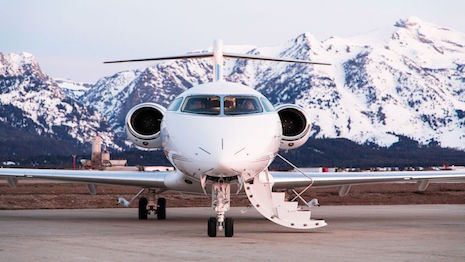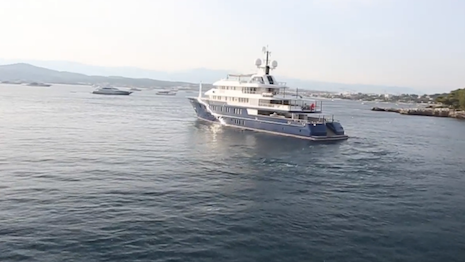- About
- Subscribe Now
- New York,
March 30, 2018

 Private jet and flights are growing. Image credit: NetJets
Private jet and flights are growing. Image credit: NetJets
Superyachts and private jets are opulent modes of transportation that few can afford, but despite recent rough patches, new numbers suggest a bounce back for the pillars of luxury travel.
Plagued by shifting traveler interests, the superyacht and private aviation industries have been struggling. However, numbers from Knight Frank’s Wealth Report show that activity with private jets grew in 2017, as well as superyachts in the United States.
"Sales of new private jets remain relatively flat," said Rolland Vincent, director of JETNET iQ, which analyses the global jet fleet. "However, a turning point could have been reached in 2017 with growth in private flight activity, in particular charter flights."
Superyachts and private jets
Total flight departures in the United States totaled 2.05 million last year, a jump of 48 percent. While Europe showed significantly fewer flights at 513,893, it still saw growth of 4.7 percent.
Even with the growth of new platforms that make that make flight sharing and discount chartering more accessible, such as JetSmarter, private jet owners were responsible for 62 percent of flights in the U.S. in 2017, according to Knight Frank.
However, in Europe, charters are much more popular, making up 51 percent of flights. In the U.S., only 27 percent of flights were chartered.
 Private jet travel has become more accessible to the ultra-affluent. Image credit: Michael Kors
Private jet travel has become more accessible to the ultra-affluent. Image credit: Michael Kors
The most popular private flight route in 2017 was between New York’s Teterboro airport and Washington Dulles.
Los Angeles’ Van Nuys and McCarran in Las Vegas followed as the second most traveled route.
For superyachts, the U.S. saw the greatest number of boats owned in 2017, followed by Russia, with 407 and 168 boats, respectively. The average length of the superyachts in the U.S. in 2017 was 52 meters, and 59 meters was the average in Russia.
Greece trailed behind with 107 superyachts, an average of 50 meters long.
Russia saw the largest average tonnage by far with 1,328 tons, compared to the U.S. at 697 tons and Greece with 598.
The majority of superyachts built from 2008 to 2017 were 30 to 40 meters long, with more than 1,000 made. The second grouping is 40 to 50 meters long, and only a little bit more than 400 have been built.
 Camper & Nicholsons Polar Star superyacht
Camper & Nicholsons Polar Star superyacht
Less than 100 superyachts have been built over 80 meters, which is the largest category.
Additional insights
While the cost of private planes used to be prohibitive to all but the wealthiest, newer, more affordable air travel options are enabling a wider population of the ultra-affluent to take advantage of private aviation.
Other research from Wealth-X and VistaJet presented on March 27 revealed that private fliers are not tied to a single mode of air travel, with even jet owners frequently opting for charters or first class commercial tickets depending on their immediate needs. Flying private is growing at a rate faster than the population of UHNW individuals and the number of privately owned planes, pointing to an increased use of alternatives to ownership (see more).
Superyachts saw a value of 8.7 billion euro, or $9.7 billion at current exchange, in 2016, amounting to 295 yachts and Italy being labeled as the largest manufacturer worldwide, according to Fondazione Altagamma.
New boats are beating out superyachts in terms of global value, at 19 billion euro, or $21 billion at current exchange, through 2015, which is a 12 percent increase from 2014. Pre-own maritime vehicles are valued at $16 billion, says the study developed in part with Delloitte (see more).
"The superyacht market is also recording growth, driven by the U.S.," said Merijn de Waard, director of SuperYacht iQ.
Share your thoughts. Click here